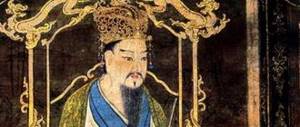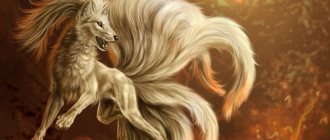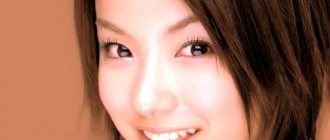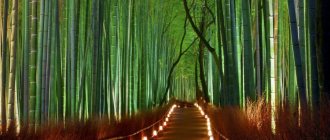Probably, almost everyone imagines what ancient Japanese drawings depicting sexual scenes look like, sometimes even too openly, but not everyone knows that this type of art is called shunga.
The name of this type of painting is translated as “image of spring.” By spring, the Japanese often mean sex. In general, shunga contain a lot of symbolism in their pictures, for example, the buds of plum flowers symbolize innocence, and the unfolded fabric symbolizes the approach of ejaculation.
Erotica as art
At the British Museum's exhibition of erotic woodcuts, Shunga: Sex and Pleasure in Japanese Art, you quickly realize how wrong it would be to dismiss the works on display as mere pornography.
Exhibition curator Tim Clark says: "I think people are surprised by these sexually explicit works, their beauty and humor and, of course, great humanism."
Tim Clark, exhibition curator
One of his favorite works of the 165 included in the catalog is a set of 12 prints by Torii Kiyonaga (1752-1815). The hugging figures are drawn exceptionally subtly, and the bold framing of the compositions allows the viewer to feel even more clearly the reality of the scenes depicted.
Clark says he admires most of all the “sensibility and sophistication of the carvers and printers” who turned the fine lines of Kiyonaga’s drawings into woodcuts.
The exhibition of shunga paintings is the result of a research project that started in 2009 and involved 30 collaborators. The goal of the project is to “recover a collection of works and subject them to critical analysis,” says Clarke.
About 40% of the works presented at the exhibition belong to the British Museum, where shunga began to be collected in 1865. A significant part of the remaining work belongs to the International Research Center for Japanese Studies in Kyoto.
Clark's favorite definition of shunga is “sexually explicit art,” with the emphasis on the word “art.” It. Surprisingly, almost all famous Japanese artists of that time painted shunga.
As the exhibit explains, early shungas were made from expensive materials. They were valued and passed down from generation to generation. It is recorded that one picturesque scroll of shunga cost fifty momme of silver - an amount sufficient at that time to buy 300 liters of soybeans.
In addition to the completely obvious, shunga also has unusual uses. They were believed to have the ability to strengthen the courage of warriors before battle, and were also a talisman that protected against fire.
In addition to its entertainment value, shunga also served an educational function for young couples. And despite the fact that their authors were exclusively men, it is believed that many women also liked to look at these drawings.
Nishikawa Sukenobu Shunga. A man seduces a young woman; a shamisen lies on the floor behind him. Hand-colored woodcut with green background. The same print, but uncolored, is in the collection of the Museum of Fine Arts, Boston. (1711-1716)
Painting, horizontal scroll, shunga. One of 12 erotic encounters. An adult samurai and a young girl are hugging under a blanket. A woman straightens her bed. Ink, paint, gold and silver pigment, gold and silver leaf on paper. Without a signature. (Early 17th century)
Many prints show sexual pleasure as mutual caresses. “They are strongly connected to everyday life,” says Clark. “Sex is often depicted in everyday settings, between husbands and wives.”
The print shown at the very beginning of the exhibition is such an example. The Pillow Poem by Kitagawa Utamaro (d. 1806) depicts lovers in a room on the second floor of a tea house. Their bodies are intertwined under luxurious clothes, and he looks passionately into her eyes. Her buttocks are visible from under the kimono.
“The Pillow Poem” (Utamakura), Kitagawa Utamaro. Shunga, colored woodcut. No. 10 of 12 illustrations of a printed folding album (set of individual sheets). Lovers in a closed room on the second floor of a tea house. Inscribed and signed. (1788)
Often, it was fashionable kimonos, decorated with hand-painted and embroidered designs, intricate hairstyles, and eye-catching accessories that were more important in these engravings than the images of the beauties themselves. As a rule, the objects of the image were courtesans from the so-called gay quarters that were in any large city. An example of this is the Yoshiwara quarter, which was located in the northern part of Edo, on the opposite bank of the Sumidagawa River from the center.
Three times a year - in the spring during the cherry blossoms, in the summer during the peony blossoms and in the autumn during the chrysanthemums - a parade of the most attractive and popular beauties was held in Yoshiwara, on the central street of Nakanotyo. After the parade of all the “flowers,” as the courtesans were figuratively called, portraits of oiran were released - high-ranking courtesans with their students and maids (kamuro and shinjo), walking along the street in all their splendor.
The emergence of the genre of bijin-ga (images of beautiful women), as well as the appearance of easel engravings on separate sheets (ichimai-e) is associated with the name of Hishikawa Moronobu.
In the first half of the 18th century. One of the largest schools of ukiyo-e painting was the Kaigetsudo dynasty. The masters of this school created picturesque full-length portraits of courtesans in bright colorful costumes against neutral backgrounds. These were images that served as a kind of advertisement for famous beauties, popular inhabitants of cheerful neighborhoods. The interest in the inhabitants of the cheerful neighborhoods was so great among the townspeople that soon images of beauties appeared in interiors, captured at different times of the day. The ideal of female beauty changed over time; in the second half of the 18th century, the tall beauties of the artists of the Kaigetsudo school were replaced by the petite young girls of Suzuki Harunobu and Isoda Koryusai, and at the turn of the 18th–19th centuries, beauties of a more mature age came into fashion again, depicted in the engravings of Kitagawa Utamaro. and Torii Kiyonaga. In addition to full-length ceremonial portraits and images in a chamber, intimate setting, full-length portraits of okubi-e, or “big heads,” are becoming fashionable, marking the growing interest of artists in conveying the emotional states of their heroines.
One of the most famous ukiyo-e artists, who largely determined the characteristics of Japanese classical woodcuts during its heyday, was Kitagawa Utamaro (1753–1806). Many of his beautiful albums and series of easel engravings appeared as a result of a long collaboration with the famous publisher Tsutaya Juzaburo. Utamaro became famous primarily for his bust-length portraits of courtesans, as well as polyptychs with genre scenes, illustrated albums, and series with paired portraits of lovers. Now these are not only courtesans or maids from tea establishments, but also simply city women going about their daily activities.
Artists of this period paid more attention to the relationship between the characters - mother and child, the legendary couples in love.
In the engravings of artists of the Kikugawa dynasty (Eizan, Eisen), who worked in the first half of the 19th century, you can see beauties in magnificent costumes. The draperies of the kimono completely hide the figure, the ornament is interpreted brightly and flatly, the line becomes broken and fractional.
The Birth of Frankness
It all started around the 14th century. Shunga artists were inspired by nothing other than Chinese medical collections, which depicted naked people in all honesty. But shunga reached its peak already in the 17th century, during the Edo period.
The authorities often did not like such looseness of citizens, and attempts were made to ban explicit images more than once. During the reforms of 1772, not only shunga was banned, but in general all new books had to undergo strict censorship.
Europeans did not understand such art. Francis Hall, an American publisher who moved to Japan in the 19th century, was shocked when he was shown examples of shunga. And even in 1975, Peter Webb, a shunga researcher, noted that such images “cannot be displayed in public.”
Newspaper engravings
Towards the end of the Edo period, the Japanese became more and more interested in the customs of foreigners, and numerous prints were printed representing foreigners in their daily lives.
Japanese prints were also very useful in the period when newspapers did not yet exist to disseminate information to the most distant provinces. Thus, prints were sold that represented in the form of an illustrated sheet such significant incidents as the death of a great Kabuki actor, natural disasters, crimes, etc.
Numerous other types of prints, such as those representing famous warriors, monsters, youkai and other spirits, entertained the Japanese.
(from left to right) Utagawa Hiroshige III “America, France, Nanjing”, 1860. Katsushika Hokusai “One Hundred Legends. House with a Broken Plate”, 1831-1832. Hagi Uragami Museum
Story
Shunga appeared in China. It is believed that the ancestors of the genre were illustrations in Chinese medical manuals that appeared in Japan during the Muromachi period (1336-1573). In addition, Zhou Fang was an influential painter during the Chinese Tang Dynasty. He, like many erotic artists of his time, exaggerated the size of the genitals in his works. This became a characteristic feature of shunga.
In Japan, the history of shunga dates back to the Heian period. They depicted sexual scandals at the imperial court and in monasteries, and the characters were usually courtiers and monks. The style became widespread during the Edo period (1603–1867). Thanks to the woodblock printing technique, the quantity and quality of shunga has increased dramatically. There were repeated government attempts to ban shunga, most notably in 1661, the Tokugawa shogunate issued a decree banning, among other things, erotic books known as koshokubon
(Japanese: 好色本
ko: shokubon
). Although other genres of art mentioned in the decree, such as works criticizing daimyos and samurai, became illegal, shunga continued to be created without much difficulty. The 1772 decree was more strict: it was forbidden to publish any new books that had not received official permission from the city ruler. Shunga also became illegal. There is, however, a possibility that even in this form the genre continued to flourish, as it was in demand.
The spread of Western culture and technology at the beginning of the Meiji period (1868–1912), in particular the import of photographic reproduction techniques, had serious consequences for shunga. Woodcuts were preserved for a time, but the characters began to be depicted in European clothes and hairstyles. Eventually, shunga could no longer compete with erotic photography, which led to its demise.
Shunga of the Meiji period. A man with a European hairstyle copulates with a woman in a traditional Japanese costume
History of hand-drawn erotic stories
The first drawings date back to the fourteenth century, and pictures appeared in China in medical reference books, and by the seventeenth century shunga had already reached its peak in Japan. Then Japanese culture reached its golden age, and the inhabitants attached quite a lot of importance to sensual pleasures.
Most often, the pictures depicted the sex life of ordinary townspeople, although you can also see samurai and sumo wrestlers and even foreigners: the Dutch or the Portuguese. You can also meet a lot of Tokugawa courtesans; they were also captivating and inaccessible, like now catwalk stars or film actresses - only the rich and famous Japanese could use their services.
It is not difficult to guess that the excessive romanticization of the lives of women with not the most correct behavior caused a lot of criticism, although the world of courtesans was not always shown as ideal. Kabuki actors were also portrayed alongside the courtesans, who also did not always lead a righteous life, earning extra money by providing sexual services, which, judging by the images, even samurai used.
The pictures did not always depict traditional or even gay sex. Sometimes there are completely unusual stories. In one of the most famous drawings, for example, a woman clearly enjoys the caresses of two octopuses. Although, judging by the description, the woman did not do this entirely of her own free will, completely different emotions are clearly visible on her face.
A world of humor and satirical allusions
Kawanabe Kyosai
However, much of shunga can hardly be considered naturalistic depictions of sex. This becomes obvious when looking at the huge genitals and the shocking and humorous situations depicted in many of the prints. There are many similarities between erotic shunga and what is known as warai-e, or “funny pictures.”
The left scroll of a pictorial triptych by Kawanabe Kyosai (1831-1889) from the early Meiji era depicts a passionately embracing couple. The back shows a playful kitten with bare claws, whose attention is clearly drawn to the most sensitive parts of the male anatomy. The viewer can guess what happened next.
Humor in shunga can be both sharp and obscene. As with much of the folk culture of the Edo period, and certainly with the sexually explicit art of more modern eras, there is an element of rebellion.
One example is shunga versions of moral education books for women. Sometimes sexually explicit parodies are so similar that they appear to be made by the same artists and publishers as the originals. In fact, they actually come from the same publishing background.
However, when shunga satire got too close to the truth, censorship immediately appeared. Declared illegal in 1722, shunga was banned for two decades. Later, similar persecutions also occurred, but the art of shunga never completely disappeared. It skillfully used its semi-legal status to reach new levels of satire. Many shunga still amaze with their boldness and freedom of imagination.
One set in the exhibition features portraits of kabuki actors and enlarged images of their erect penises. The style of the pubic hair follows the actors' wigs, and the bulging veins match the lines of their makeup.
Pre-Columbian America
The most outspoken and sexual civilization of pre-Columbian South America was not the Aztecs or Incas, but the Moche culture, who lived in northern Peru from 100 to 800 AD.
Their representatives were skilled craftsmen. They were especially good at ceramics. About 500 ceramic items with sexual scenes were found.
Most often, the Moche depicted anal sex, while vaginal sex was depicted on their products extremely rarely.
There was also blowjob, but cunnilingus - never.
Most of the couples are men and women, and the genitals of the partners are depicted in great detail.
Images of skeletons being masturbated by living women were also found.
Ancient Egypt
Ancient Egypt is the birthplace of sundials, calendars, paper, ink and pornography. In fact, the ancient Egyptians, apparently, knew a lot about perversion.
Turin erotic papyrus, reconstruction
It was in Egypt that the first “prehistoric Playboy” was found - the Turin erotic papyrus, consisting mainly of various images of sex scenes. It dates back to 1292−1075 BC.
Men giving themselves blowjobs, papyrus, 1070 - 664 BC.
Despite the fact that most people in Egypt were not involved in incestuous relationships, the Egyptian gods did not shy away from them, and, imitating them, the rulers also leaned towards them - the pharaohs willingly married their own sisters.
Limestone sculpture, erotic group, 332 - 283 BC.
But as for virginity before marriage, the Egyptians, apparently, did not give a damn about it - it was mainly the Romans who professed such morality.
Erotic scene between a man and a woman, 332 BC. - 337 AD
Ancient Greece and Rome
The ancient Greeks were very consistent in their sexual preferences. It was the culture of Ancient Greece that showed us what homosexual relationships between men look like.
It is noteworthy that the wife, according to the ancient Greeks, served exclusively for childbearing, while for pleasure they preferred young men (or prostitutes).
Older men had to raise young men - instruct and take care of them, including teaching them the art of pleasure. At the same time, intimate relationships between two adult men were considered obscene.
The ancient Greeks often depicted sex scenes on ceramic amphorae. Strictly speaking, they depicted scenes of everyday life: some of them were more erotic, some less.
Many drawings with sexual scenes were found in excavations of Roman buildings in Pompeii and Herculaneum.
Two men and one woman making love, fresco, Pompeii, 79 BC.
Leda and the Swan, Pompeii, 50−79 AD.
Wine cup with pentathlon participants, 505 - 500 BC. uh
Amphora with erotic subjects, c. 510 BC
India
There is not an adult who has not heard anything about the Kama Sutra - an ancient Indian treatise dedicated to sensual bodily love.
Sexuality in the minds of the ancient Hindus was an obligatory part of spiritual growth, inseparable from the mental sphere.
Of course, this was reflected in their visual culture. The most famous explicit statues reflecting human passion are the bas-reliefs from the “temple of love” of Khajuraho. Stone lovers do things we never dreamed of.
In addition, their famous miniatures are considered classics of Indian erotic art.
Shunga Japanese
But along with decent ukiyo-e paintings, within this direction of painting the erotic genre shunga (“spring pictures”) lived and continued to develop from ancient times. Such paintings were hidden from Europeans, because... they glorified the intimate aspects of Japanese life. In fact, it was classic Japanese pornography.
Artist Hishikawa Moronobu. Shunga.
2.1 Demand creates supply
The laws of the market are inexorable. Before the recognition and emergence of demand in the West for ukiyo-e graphics, it was shunga engraving that provided income from the sale of works of fine art and allowed artists and publishers of Japanese painting to stay afloat. Authentic engravings, hand-drawn by the authors, were expensive. And because of mass production, erotic drawings were affordable for any city dweller.
Funny pictures were printed on low-grade paper, characterized by low quality printing and rough execution of the drawings. However, due to the large circulation of pornography, which in Medieval Japan accounted for half of all printed products, the sales amounts were more than impressive.
Artist Torii Kiyonaga. Shunga "Women's Bath".
In Christian Europe this was unthinkable. The monstrous rate of spread of erotic painting in the Land of the Rising Sun was explained by the ancient Shinto traditions of Japan.
There was no such concept as original sin. According to legend, the world was the fruit of the love of two deities: Izanagi and Izanami (read more HERE) and was, like love itself, the embodiment of cosmic harmony. The need for sex was as natural as the need for food, water and sleep.
For centuries, relations between men and women were free, the only condition for their emergence was mutual sympathy. If feelings weakened, lovers easily found new partners. Polygamy was common. These traditions are reflected in the visual arts.
2.2 Technique of erotic drawing
The depiction of partners in erotic drawings is very different from the European tradition. These are not sketches from life. Most of the drawings depict scantily clad partners whose anatomical data is far from reality.
The half-open hem of the kimono reveals huge genitals. This is the most characteristic feature of a shunga picture. The West has always made fun of this, calling such images “the unfulfilled dream of a Japanese man.”
It is sometimes impossible to distinguish where the man is, where the woman is and in general where who is in the drawings. It often turns out that lovers are same-sex.
Crazy poses, unnaturally twisted arms, legs and spines, creepy pubic hair and faces distorted by ecstasy indicate that all this is a stylized image of the author’s dreams and flights of fancy within the genre.
Many drawings depict an octopus. He is a character in many legends associated with the lives of unmarried female divers - ama. This is the maritime sex symbol of Japan. A strong, tireless eight-membered monster with intelligent eyes and a soft phallus-shaped head, which, after completing sexual pleasures, can also be eaten.
There is even a legend about the geisha Naruko, whose sign of readiness for love was serving a client an octopus dish.
Artist Utagawa Kuniyoshi. Shunga "Octopus"
2.3 Details and signs
Japanese artists knew that half-naked bodies are more arousing than naked ones. The clothes spoke about the status of the partners. This was important. Plus, in the Middle Ages, naked female breasts were not classified as highly sexual attributes.
Men were aroused by ears, necks and feet. The emphasis was placed on them.
The more protruding a woman's ears were, the sexier she seemed.
The neck was also very important. It is no coincidence that it is precisely this that is exposed by the collar of a geisha’s kimono even today.
Artist Utamaro Kitagawu. Shunga "Poem of the Pillow"
Courtesans were expected to show off their feet. The protruding thumb emphasized the woman's sexuality. Pay attention to the feet of your partners in shunga pictures. Their toes either clench or stick out funny like a fan, symbolizing the fire of passions. At the same time, they live completely separately from the expressions on the faces of their lovers.
In general, attention to minor details is a distinctive feature of the genre.
2.4. Shunga publication form
In their form, shunga were published in the form of twelve-sheet albums consisting of related pornographic comics. They served three main purposes:
- Japanese sex education
- Entertainment
- Encouragement to visit the “fun quarters”, scenes from the life of which were depicted in the drawings
The first and last pages of the cover were completely innocent. The first showed the scene of the lovers meeting, the last showed their separation and return to everyday life. Everything that was inside was a journey into the life of carnal plants.
Album with shunga drawings
The first editions were black and white and of poor quality, but as printing technology developed, publishers began to delight the Japanese with multicolor editions and the names of famous ukiyo-e authors.
2.5 Japan's greatest artists
These, in addition to the above-mentioned Hishikawa Moronobu , include
Kiyonobu Torii (1664-1729) - a follower of Hishikawa Moronobu, the founder of the yakusha-e genre (portraits of actors on posters, posters and easel engravings) and the mimizugaki (“worm-shaped”) style of drawing - this is when exaggerated images of the muscles of the arms and legs are depicted with sinuous lines with alternating thin and thick strokes.
Artist Kiyonobu Torii. Shunga.
Suzuki Harunobu (1724-1770) - inventor of color engraving. He influenced the work of impressionists Edouard Manet and Edgar Degas
Artist Harunobu Suzuki. Shunga "Courtesan Blows Smoke in a Man's Face"
Torii Kiyonaga (1752-1815) is especially famous for his works in the bijinga style (“depictions of beauties” in the traditional Japanese style, most often in kimonos).
Artist Torii Kiyonaga. Album with shunga engravings.
Kiryusai Isoda (1735-1790) – student of Torii Kiyonaga and Suzuki Harunobu, master of the hasira-e format (drawing sheets of narrow vertical format that are hung on poles)
Artist Koryusai Isoda. Shunga "Lovers and iris in a vase"
Utamaro Kitagawa (1753-1806) - became famous for his paintings of geishas in the Yoshiwara district of Tokyo. In 1804, for an “inappropriate” depiction of the ruler of Japan, Toyotomi Hideyoshi was imprisoned, from which he soon died.
Artist Utamaro Kitagawa. Shunga "Divers"
Katsushika Hokusai (1760-1849) lived from hand to mouth, created his own style, and applied a European perspective. He is called the Japanese Hieronymus Bosch
Artist Katsushika Hokusai. Ukiyo-e "The Great Wave off Kanagawa"
Utagawa Kuniyoshi (1797-1861) and Utagawa Kunisada (1786-1864) – “decadents” of shunga. In their work, not a trace of the old days of sexual fun remained.
Artist Utagawa Kuniyoshi. Shunga from the series "Scary Stories"
Artist Utagawa Kunisada. Shunga.
All these authors knew very well the life and traditions of the cheerful neighborhoods of Tokyo and other Japanese cities. They themselves have repeatedly been participants in similar scenes. You could say they were real painters - they painted from life.
Thanks to their skill and talent, shunga gradually moved from the category of cheap pornography into the realm of high art. As a result, their works became monuments of history and fine art of Japan. Masterpieces of Japanese shunga are kept in the best museums in the world.
Today we talked about Japanese erotic shunga prints. How did you like the article? If yes, then be sure to share it on social networks and subscribe to blog updates.
Shunga in modern Japan
“The simple-minded type” (Uwaki no so) from “Ten physiognomic types of women” (Fujin sogaku jittai), Kitagawa Utamaro. Colored woodcut with background covered with mica powder. The head of the girl wiping her hands on the cloth is turned, her chest is visible. Inscribed, signed, sealed and marked. (1792-1793)
Ironically, soon after shunga became famous in the West (Admiral Perry was given shunga as a “diplomatic gift”, and Picasso, Rodin and Lautrec were real fans of the genre), the Japanese decided that it was time to end this art. It was only in the 70s of the 20th century that an exhibition of shunga, which had been persecuted for years, was held in Japan.
This exhibition reaffirms the importance of shunga to all Japanese art. However, even now, according to researchers, it would be difficult to imagine an exhibition on the same scale in Japan as in the British Museum.
“It is clear that shunga was an integral part of Japanese culture until at least the 20th century,” says Andrew Gerstle, professor of Japanese studies at the School of Oriental and African Studies (SOAS), University of London. “People are surprised that it is still impossible to hold such an exhibition in Japan itself.”
According to Clarke, the response to their exhibition in both the UK and Japan has been "absolutely phenomenal". Only half the time allotted for the exhibition has passed, and they are already approaching the planned number of visitors.
Exhibition co-author Yano Akiko, a research fellow at the Center for Japanese Studies at SOAS, said the team had gone to great lengths to explain to visitors "a complex phenomenon that predates our era."
“I was a little worried that we were trying to give too much information,” she says. “However, the majority of visitors seemed to really enjoy the exhibition - they fully accepted the content of the exhibition and understood what we wanted to convey. It was the best reaction we imagined."
Shunga belongs to the ukiyo-e genre.
This is the main genre of Japanese woodblock prints. From a philosophical point of view, ukiyo-e
- this is a “cast of the moment.” Most often - pictures of everyday life, landscapes that convey emotions or mood.
Woodcut
— printing engravings on wooden blocks. This technique was borrowed by the Japanese from the Chinese in the 8th century and was originally used in the spiritual realm: as an image of Buddhist saints and illustrations of religious texts. At first they were black and white, later they appeared in color.
Engravings became widespread in the 16th century, when shogun Tokugawa Ieyasu founded the capital of his own shogunate - the city of Edo (modern Tokyo). A new class of citizens that emerged in the rapidly growing city became the main consumer of ukiyo-e: inexpensive pictures that looked like postcards.
The expressive prints that inspired European artists were not considered works of art and had little in common with traditional Japanese painting, which remained an expensive pleasure for the elite.
Ukiyo-e was often used for advertising and illustrations of popular low-grade literature, and they depicted kabuki actors.
Surimono
(from left to right) YASHIMA GAKUTEI (1786 (?) - 1868) Jurojin. 1825 (?), Color woodcut From the series “Like the Seven Gods of Happiness” KATSUSHIKA HOKUSAI 1760 (?) - 1849) ( Three figures in front of a painted screen. 1799–1808, Color woodcut Poems by Nomichi Kisanji: Together with Daikoku Courtesan, beautiful like Benten, Walking at the Ebisu Shrine on a spring day.
The only truly artistic prints not controlled by censorship were surimono. Magnificent ukiyo-e, which were the subject of private commissions and were never intended for sale, but were a message, a gift, expressed through image, text (most often in the form of poetry) and calligraphy. The softest materials, the most magnificent dyes, the most sophisticated methods of corrugation, half-tone colors and, without counting, gold powder and money were used to realize these works of great beauty.
Kawanabe Kiyosai (1831-1889)
They were meant to delight, like all other engravings, held slightly bent in the hands in order to give a sense of the delicacy of the colors and the shining parts.
Fans and admirers
It's funny, but among shunga fans there were both men and women of all classes. There were many superstitions around the explicit paintings. For example, samurai took shunga with them, believing that it would protect them from death. Merchants kept shunga in their warehouses, believing that images of men and women having sex would protect the warehouse from fire. However, what worked against this assumption was that almost all shunga-keeping groups had very limited access to the opposite sex: samurai lived for months in each other's company, and merchants traveled widely to purchase goods from other countries. Thus, perhaps the storage of shunga was purely sensual and not superstitious.
Shunga also served as a kind of “instruction” for the sons and daughters of wealthy families who were about to get married. However, this version also has opponents - often the lovers depicted in shunga had sex in such positions that the presence of bones in them raised serious doubts. Not to mention that it’s unlikely that a young bride will be happy to learn exactly how to have sex with an octopus.
In addition, in Japan there were also ordinary “manuals”, where more precise instructions were given both regarding sexual intercourse and regarding intimate hygiene.
For whom were shunga painted?
Like any unusual art, shunga had its admirers and persecutors. Samurai and merchants loved pornographic pictures; they say they carried them with them as amulets to protect them from death or fire. To be honest, this explanation raises serious doubts: representatives of both professions were forced to do without female company for a long time; most likely, carrying pictures with them had a more practical explanation.
Even now, with a huge number of pornographic photographs available almost freely on the Internet, these pictures can seriously excite both the imagination and the body.
Admirers of this type of painting were among all classes, genders and ages. Such freedom of morals worried the authorities so much that in 1661, and then in 1772, the drawings were banned, but, as one would expect, shunga did not go away, it just hid from prying eyes for a while.
By the way, such images shocked travelers; it was difficult to foresee that in the twenty-first century this painting would gain many fans in the West.
The Japanese are such entertainers
The shunga technique even now evokes very vivid emotions, although the modern viewer is quite sophisticated. What's the secret?
In the drawings, people are usually dressed; the Japanese do not consider the human body to be something very beautiful, and besides, they do not see anything shameful in nudity. But when only naked intimate parts of the body are visible, and even depicted in all anatomical details, in slightly enlarged proportions, it attracts the eye. It’s simply impossible to tear yourself away from these details!
It is said that these pictures were used by the children of wealthy citizens as a guide for newlyweds. If this is, in fact, the case, then their married life was quite eventful. Often pictures are accompanied by text explanations to better understand the meaning of what is happening. It is possible, of course, that the shunga had some influence on the younger generation, but for the newlyweds there were other guidelines for action.
Shunga, of course, did not become the Japanese Kama Sutra, but they excite the mind, body and imagination no less.
Shunga symbolism
Shunga was often accompanied by written explanatory texts and dialogues. But there are also other, not so straightforward symbols in the images. For example, the buds of plum flowers mean virginity, and the unfolded fabric means impending ejaculation.
It is curious, by the way, that people in most shunga are depicted dressed. This happens because the Japanese do not consider nudity particularly attractive: they often see each other naked in public baths. Additionally, clothing helps readers differentiate between courtesans and foreigners. Prints on clothing also often carry symbolism and also draw attention to exposed parts of the body - usually the genitals.
Shunga in the modern Western world
In 2013, the UK hosted a large exhibition of shunga at the British Museum. In Japan, only one museum dared to do this in 2015, despite the fact that the exhibition was offered to a dozen other museums that refused.
Shunga subjects have become quite popular; with Japanese prints in this style you can see not only pictures, but also dishes, clothes, and household items. What is considered indecent pornography in its homeland has become one of the hallmarks of Japanese art in other countries.
Although the heyday of shunga has long passed, undoubtedly, as real works of art capable of making an indelible impression on people, they will always arouse interest, along with the great creations of masters of painting from different countries and centuries.
Educational and game prints
Engravings were printed to make it easier for children to learn to read the alphabet or hieroglyphs, as well as remember the names of flowers, birds, etc. During the Meiji era, when Japan opened up to the world and the teaching of English began, prints were printed to teach the alphabet and basic vocabulary of the language.
No one today would dare to cut Japanese prints. However, many of them were designed specifically for these purposes. For example, theatrical puppet stages and cut-out kimonos, launchable models, etc. Printed fool games delighted both children and adults. Rebuses and engravings of Chinese shadow games were also highly valued.
(from left to right) Utagawa Kuniyoshi “Riddles for Warriors”, 1847-1852. Utagawa Hiroshige “Playing with Shadows, impromptu. A ship's entry into port and a bowl stand, 1830-1843. Hagi Uragami Museum










